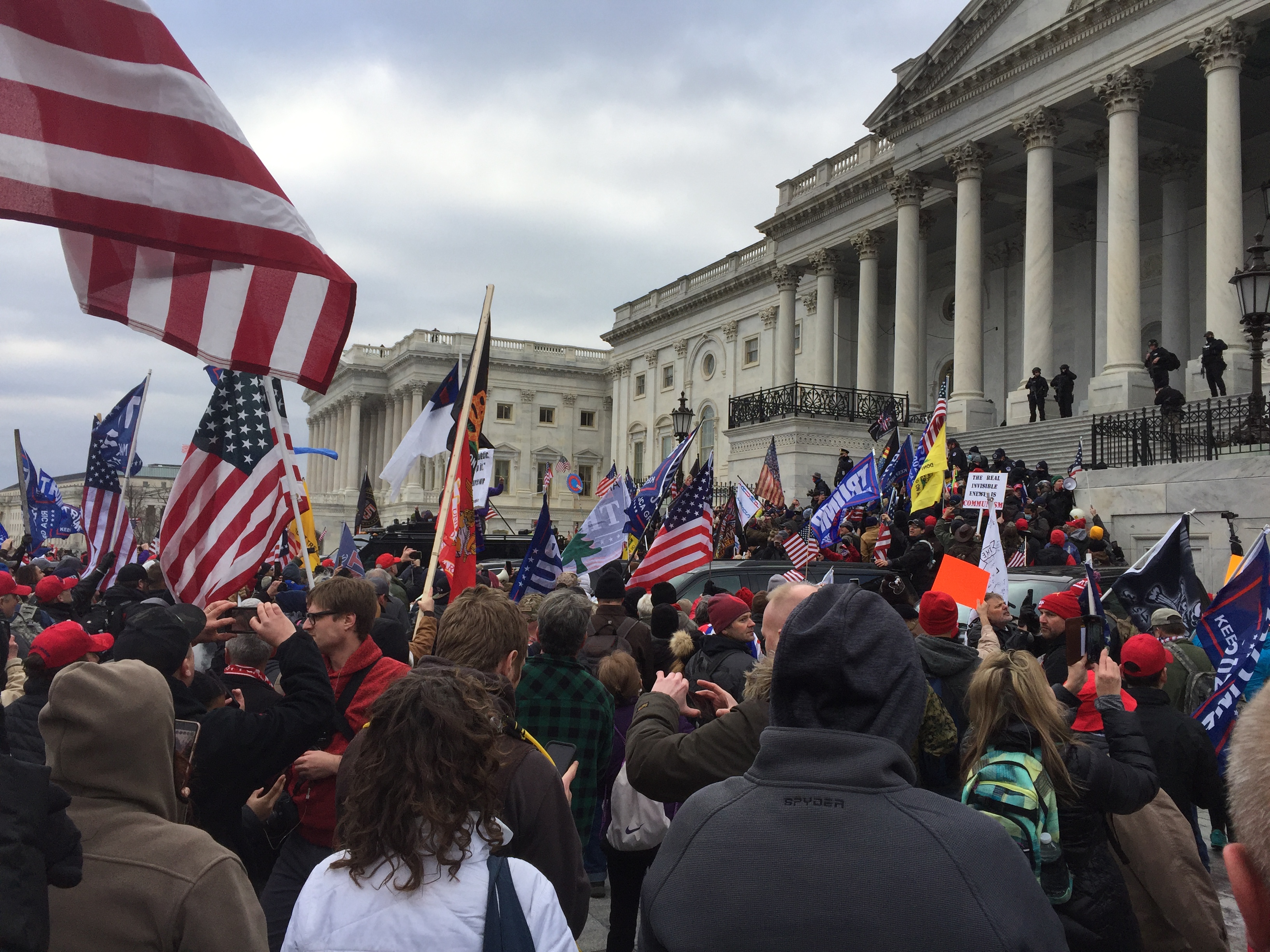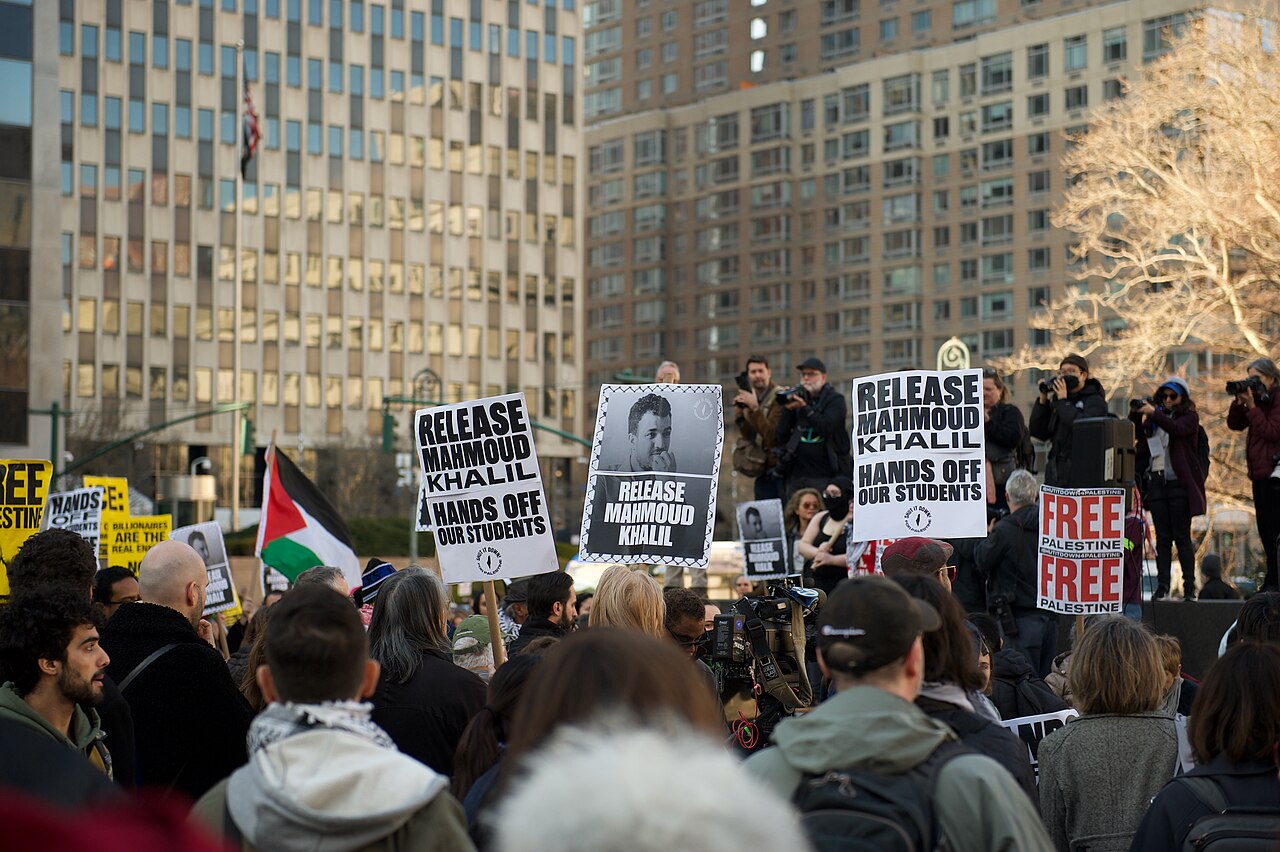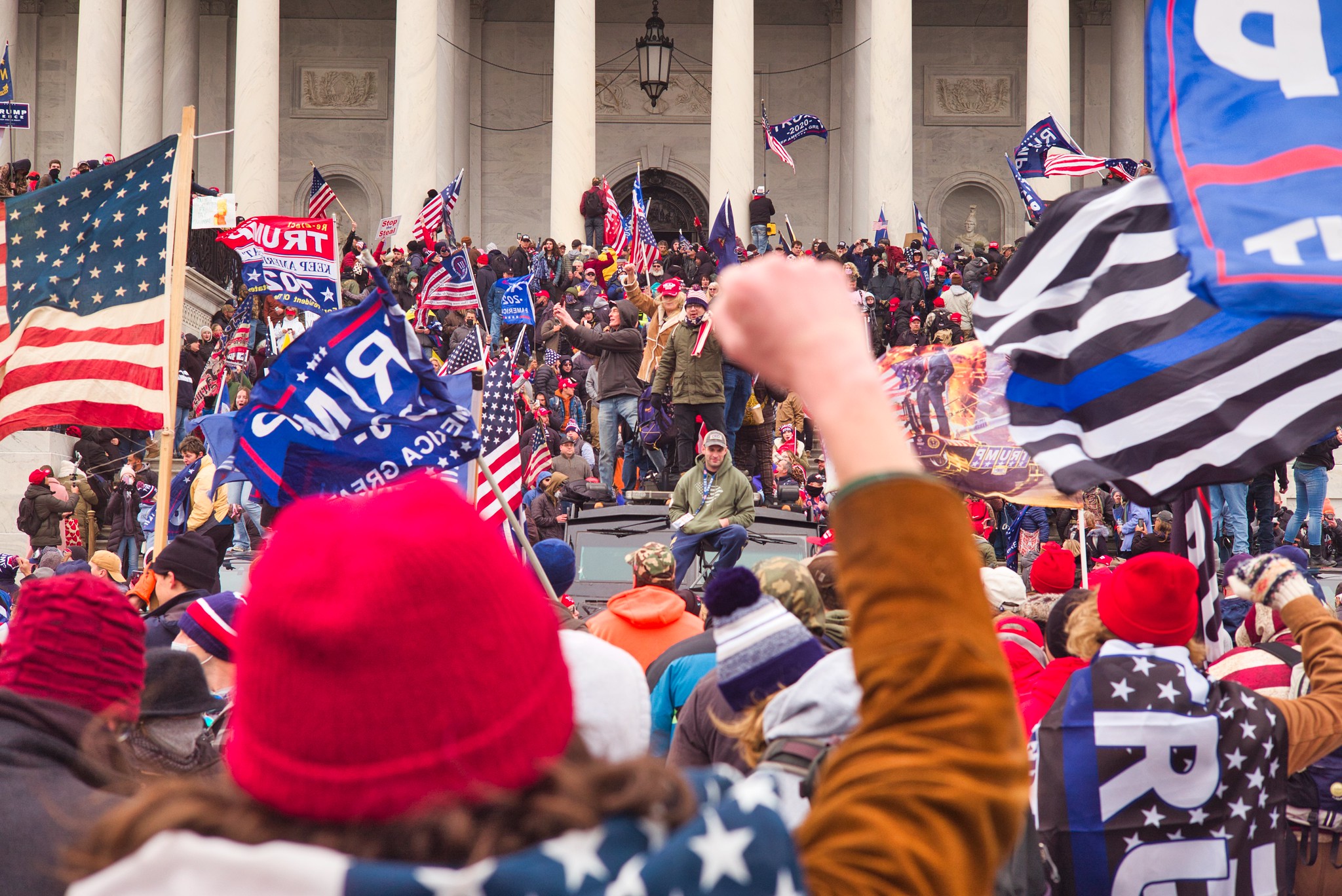The Court’s Fischer Ruling Is a Symbolic Setback for the Justice Department—But One With Modest Consequences

Published by The Lawfare Institute
in Cooperation With

It could have been worse for the Justice Department.
On June 28, the U.S. Supreme Court did what many commenters had been fearing for almost three years: It barred—or at least pared back—the department’s use of a key felony charge in the Jan. 6, 2021, Capitol Siege cases: corrupt obstruction of an official proceeding under 18 U.S.C. Section 1512(c)(2). The department has leveled that charge against at least 355 individuals, according to its data, which is about one quarter of the 1,427 total defendants who have been federally charged in connection with the insurrection.
Yet the blow will likely have less dire consequences than many cassandras—including me (for example, here, here, here, and here)—once assumed. That is so for practical as well as legal reasons. As a practical matter, no defendant was charged solely with that offense, and the most violent actors were invariably charged with multiple felonies in addition to 1512(c)(2). Further, the ruling has arrived late enough in the litigation that it will not have a noticeable impact on the vast majority of cases. Only about 52, as explained below, are likely to be significantly impacted. Finally, as a legal matter, the Supreme Court left open the possibility, as Justice Ketanji Brown Jackson stressed in her concurrence, that prosecutors might still be able to use this charge in Jan. 6 cases—including those of the 52 defendants most potentially impacted.
Moreover, as also discussed below, the ruling appears unlikely to have any effect on special counsel Jack Smith’s four-count election-interference indictment against former President Donald Trump in Washington, D.C. That indictment includes one count of corrupt obstruction of an official proceeding, and one count of conspiring to commit that offense.
The 6-3 ruling, authored by Chief Justice John Roberts, Jr., unquestionably and greatly narrows the ambit of the law. While the Justice Department had assumed that the statute broadly criminalized corrupt attempts to obstruct official proceedings, including by means of riotous conduct, the majority concluded that that the law is narrower. It defines, rather, a more conventional, obstruction-of-justice crime that focuses on corruptly falsifying or destroying evidence or other objects being used at an official proceeding. The crux of the holding, in the Chief Justice’s words, is this:
the Government must establish that the defendant impaired the availability or integrity for use in an official proceeding of records, documents, objects, or ... other things used in the proceeding, or attempted to do so.
Though Roberts’ ruling was based largely on textualist arguments, one of the Court’s preeminent textualists, Justice Amy Coney Barrett, wrote the dissent, which was joined by Justices Sonia Sotomayor and Elena Kagan. “The Court,” Barrett wrote, “does textual backflips to find some way—any way—to narrow the reach of subsection (c)(2).” She chides the majority justices who, she concludes, “simply cannot believe that Congress meant what it said.”
At first glance, the majority ruling appears to preclude use of the statute against Jan. 6 defendants, who, like defendant Joseph Fischer, a then-Pennsylvania police officer, allegedly stormed the Capitol with intent to stop the electoral vote count through multiple unlawful means. (Fischer was charged in a seven-count indictment that included two other felonies, including assaulting a federal officer and impeding a law enforcement officer during a civil disorder.)
But in a concurring opinion, Justice Ketanji Brown Jackson suggested that the Justice Department might yet be able to pursue a 1512(c)(2) charge against Fischer—and other Jan. 6 defendants—on a fallback theory the Justice Department had proposed:
In my view, the Court properly interprets §1512(c)(2) in the opinion it issues today. It also rightly vacates the judgment below and remands this case for further proceedings. Joseph Fischer was charged with violating §1512(c)(2) by corruptly obstructing “a proceeding before Congress, specifically, Congress’s certification of the Electoral College vote.” ... That official proceeding plainly used certain records, documents, or objects—including, among others, those relating to the electoral votes themselves. ... And it might well be that Fischer’s conduct, as alleged here, involved the impairment (or the attempted impairment) of the availability or integrity of things used during the January 6 proceeding “in ways other than those specified in (c)(1).” [Citing Roberts’ opinion.] If so, then Fischer’s prosecution under §1512(c)(2) can, and should, proceed. That issue remains available for the lower courts to determine on remand.
The dispute over how to interpret 18 U.S.C. § 1512(c)(2) stems from its two-part structure.
(c) Whoever corruptly— (1) alters, destroys, mutilates, or conceals a record, document, or other object, or attempts to do so, with the intent to impair the object’s integrity or availability for use in an official proceeding; or (2) otherwise obstructs, influences, or impedes any official proceeding, or attempts to do so, shall be fined . . . or imprisoned not more than 20 years, or both.
The Justice Department read subsection 2 in a literal and straightforward way—but one giving little or no weight to the word “otherwise.” If one does that, the law says: “Whoever corruptly . . . obstructs, influences, or impedes any official proceeding, or attempts to do,” commits the offense.
At least 15 district judges in Washington, D.C., who have had occasion to interpret the law in the context of the Jan. 6 insurrection, read it exactly as the Justice Department did. But, in March 2022, first in the case of Jan. 6 defendant Garret Miller and, later, in the cases of Joseph W. Fischer and Edward Jacob Lang—U.S. District Judge Carl Nichols read the statute much more narrowly.
Nichols concluded that the word “otherwise” implied that the scope of the second subsection was limited to some degree by that of the first, reaching only conduct that was analogous in some way to the examples of specific conduct listed in subsection one. As a consequence, Nichols ruled that subsection 2 could only be used against defendants who “have taken some action with respect to a document, record, or other object.” Nichols then dismissed that count prior to trial from Miller’s indictment. He later did the same as to Fischer and Lang.
The government appealed all three of Nichols’ dismissals to the U.S. Court of Appeals for the D.C. Circuit. In a split decision, that court sided with the Justice Department. But the dissenting judge, Circuit Judge Gregory Katsas, agreed with Nichols that the word “otherwise” required that subsection 2’s scope be limited by that of subsection 1. He proposed an interpretation that was broader than Judge Nichols’s definition, but still far narrower than the Justice Department’s. Specifically, Katsas found that subsection 2 applied “only to acts that affect the integrity or availability of evidence.”
The three defendants then sought review from the Supreme Court. which, on Dec. 13, 2023, granted Fischer’s petition. The petitions of Lang and Miller were not acted upon, but will now presumably be vacated and remanded in light of Fischer.
Chief Justice Roberts’ final formulation of the definition of subsection 1512(c)(2) is close to Judge Katsas’s, but appears to be broader. For one thing—and this is potentially crucial—Roberts eschews use of the word “evidence” or “evidentiary” in his holding. As noted above, he finds that the statute reaches conduct where a “defendant impair[s] the availability or integrity for use in an official proceeding of records, documents, objects, or as we earlier explained, other things used in the proceeding, or attempted to do so.”
Why might the omission of the word “evidence” matter? Notably, the “electoral votes” that were being counted during the Joint Session of Congress on Jan. 6—which are the records and documents that concurring Justice Jackson believes might still bring Fischer’s case within the ambit of the majority ruling—are not what many people ordinarily think of as “evidence.” We think of “evidence” as the type of thing that is presented in court hearings or in Congressional investigative hearings. But it can be argued that the Jan. 6 Joint Session is more ministerial in nature. Under the Twelfth Amendment, the president of the Senate is simply supposed to “open all the certificates and the votes shall then be counted.” It’s certainly not a classic “evidentiary” proceeding.
Indeed, in Fischer’s briefing, his attorneys argued forcefully that the Joint Session was not the sort of evidentiary proceeding whose obstruction could ever form the basis of an 18 U.S.C. 1512(c)(2) prosecution. For instance, in Fischer’s petition for a writ of certioriari, he posed the Question Presented as this:
Did the D.C. Circuit err in construing 18 U.S.C. § 1512(c) (“Witness, Victim, or Informant Tampering”), which prohibits obstruction of congressional inquiries and investigations, to include acts unrelated to investigations and evidence? [Emphasis added.]
Similarly, Jan. 6 defendant Garret Miller’s cert. petition, seeking review of the same D.C. Circuit ruling, posed the Question Presented in an analogous manner:
Whether the obstruction-of-justice offenses in 18 U.S.C. § 1512(c) cover only acts that affect the integrity or availability of evidence, or whether they criminalize advocacy, lobbying and protest in connection with congressional proceedings that are neither inquiries nor investigations, such as Congress’s joint session to certify the Electoral College vote count. [Emphasis added.]
Although “official proceeding” is defined by statute (at 18 U.S.C. § 1515(a)(1)(B)) to include “a proceeding before the Congress,” the defendants were pushing hard to have the Court limit the statute to only evidentiary proceedings before Congress, as opposed to ministerial proceedings, like the Joint Session.
But the majority ruling in Fischer rebuffed Fischer’s and Miller’s exhortations. Roberts’s ruling for the majority offers no hint whatsoever that the joint session would, for any reason, not qualify as an “official proceeding” under 1512(c)(2) and 1515(a)(1)(B). Indeed, Roberts’s decision seems to go out of its way to avoid using the word “evidentiary” in its ultimate formulation of its own holding.
To be sure, defendants charged with this crime will argue otherwise. Chief Justice Roberts’s holding, quoted twice above, does incorporate the words “as we earlier explained,” and there are references to “evidence” and “evidentiary integrity” elsewhere in the majority ruling. So that will definitely be an issue to be further litigated.
But the majority’s failure explicitly to limit 1512(c)(2)’s ambit to evidentiary proceedings is also bad news for former Pres. Trump. His indictment, too, revolves around his alleged obstruction of the Joint Session of Congress. Indeed, the accusations against Trump actually seem to fit the majority’s definition of 1512(c)(2) much more easily than the conduct of the typical Jan. 6 defendant. In detailing examples of the kind of conduct subsection (c)(2) might reach that subsection (c)(1) doesn’t reach, the Chief Justice suggested that “creating false evidence” was one example.
Large portions of the indictment against Trump allege the creation of false evidence—or, at least, false documents that will be used at an official proceeding. The indictment alleges, for instance, a conspiracy to “devis[e] and attempt[] to implement a plan to submit fraudulent slates of electors to obstruct the certification proceeding.” These accusations appear to fall squarely within the majority’s definition of subsection 1512(c)(2); they allege that Trump “impaired the availability or integrity for use in an official proceeding of records, documents, objects.”
As for the more conventional Jan. 6 defendants—what I’ve referred to elsewhere as the blue-collar Jan. 6 defendants—what will be the practical impact of this decision? Let’s assume, for the sake of argument, the worst-case scenario for the government. Let’s assume that lower courts rebuff Justice Jackson’s invitation to let these cases go forward on the Justice Department’s fallback theory and hold that 1512(c)(2) is now simply inapplicable to the Jan. 6 cases. If so, what will the landscape look like then?
Surprisingly, it may not look terribly different from the way it looks now. Although at least 355 defendants were charged with this crime—about 25 percent of the total federally charged—more than a hundred of those cases have, by now, been finally resolved in ways that render the 1512(c)(2) count irrelevant. Many were resolved by guilty pleas to other counts. In a few cases, defendants were acquitted of this particular charge. That brings the universe of relevant cases down to about 249, according to a Justice Department fact-sheet issued after the ruling.
While that’s still a hefty number, remember now that no defendant was charged with 18 U.S.C. 1512(c)(2) alone. Most were—like defendants Fischer, Miller, and Lang—charged with multiple other serious felonies, including assaulting and impeding law enforcement officers. Assaulting police officers carries a maximum eight-year prison term, which is more than all but the most violent Jan. 6 defendants ever received, and impeding carries a five-year max. (The maximum for assault bumps up to twenty years if the defendant used a dangerous or deadly weapon, as more than one quarter of those charged with that offense did.) So while many of these cases might need to be remanded for resentencing, the sentencing guidelines give judges much leeway, and it’s unlikely that many such defendants will see their sentences reduced.
The only cases that are likely to be dramatically impacted by the ruling are those in which the only felony of which the defendant was convicted was 1512(c)(2). According to the Justice Department, there are just 52 such cases. Of those, 25 defendants have already served any sentence of incarceration that was imposed, according to the Justice Department’s figures. That leaves just 27 individuals who still owe time on their prison terms—or just 1.9 percent of all defendants.
Many of these 27 defendants were released on bond after the oral argument, when it became clear that the Court might well narrow the scope of the statute. It is likely that many of these defendants will, indeed, have their terms shortened and, as a result, not return to prison. Although there will be some famous names among them—Kevin Seefried, for instance, who brought a full-size Confederate flag into the Capitol—none of these individuals were among the most violent actors. If they had been, they’d have been charged and convicted of other felonies as well.
Which is not to sugar coat. The ruling is a setback for Attorney General Merrick Garland, and a big, symbolic victory laurel for his critics. In a statement Garland said he was “disappointed” by the decision, “which limits an important federal statute that the Department has sought to use to ensure that those most responsible for that attack face appropriate consequences.”
Also, if 1512(c)(2) really does become completely unavailable in Jan. 6 cases as a result of this ruling, the decision will leave a void. There is no remaining suitable charge that remotely captures the gravity of the conduct that it was used to prosecute: deliberate attempts to halt by unlawful means the official proceeding that our Constitution has prescribed to effectuate the peaceful transfer of power. There is a maximum three-year felony available for “harassing” someone to dissuade him from attending an official proceeding (18 U.S.C. § 1512(d)), and there are, of course, misdemeanors that can be charged against those who enter and remain in a restricted zone under 18 U.S.C. § 1752. But these crimes don’t begin to capture the gravity of what defendants were doing on Jan. 6.
That said, the worst actors on Jan. 6 committed multiple felonies. As a consequence, the practical repercussions of this ruling are likely to be modest.




.jpg?sfvrsn=d5e57b75_5)
